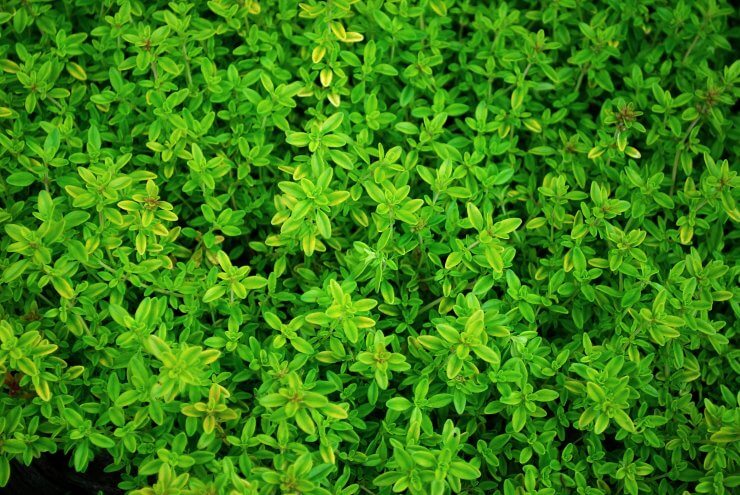
Thyme close up
If you’ve ever been in an herb garden, you’ll recognize the woody, herbaceous, slightly spicy scent of thyme. With a breeze blowing, you only have to stand nearby to pick up thyme’s aromatic scent. If the air is still, just brush your fingers lightly over the tangled stems and you’ll be rewarded with its fragrance. It’s no wonder Rudyard Kipling wrote of “our close-bit thyme that smells like dawn in paradise.”
With thyme’s delicate leaves, tiny flowers, aroma, and the complex yet subtle taste, this versatile herb is a feast for the senses—and a must in any kitchen.
A member of the mint family, thyme grows in types that differ by scent and flavor (such as lemon and caraway) and different uses, from culinary to medicinal to creeping groundcover. This collection features six popular varieties that will give you some diversity in your harvest to help supply your kitchen with different thyme for different recipes.
All thyme plants fall into these scientific hierarchy classifications:
- Kingdom: Plantae (plants)
- Subkingdom: Tracheobionta (vascular plants)
- Superdivision: Spermatophyta (seed plants)
- Division: Magnoliophyta (flowering plants)
- Class: Magnoliopsida (dicotyledons)
- Order: Lamiales
- Family: Lamiaceae (mint family)
- Genus: Thymus L. (thyme)
- Species: Thymus vulgaris L. (garden thyme)
A Brief History of Thyme

Bountiful thyme
The ancient Egyptians and Greeks used thyme not in cooking, but in rituals. The Egyptians applied thyme to their embalming procedure and the Greeks, who considered thyme a source of courage, burned it as incense in their temples and used it in baths. The Romans spread thyme throughout Europe, using it to purify rooms and giving aromatic flavor to cheese and liquors. They even considered thyme to be an antidote to poison.
Because thyme was associated with strength and courage, in the Middle Ages, European ladies would send a sprig of thyme with their knights who were going off to battle. But anyone who needed extra pluck sought to benefit from thyme’s powers.
During the Plague in the 1300s, people made bouquets of thyme—along with other herbs—or applied thyme to their blistered skin for protection and healing. Though they didn’t know it at the time, it is possible the people benefited from the fact that thyme’s essential oil contains thymol, one of the strongest antiseptics known. Muslim countries used thyme to fumigate houses and today thymol can be found in mouthwashes, cough drops, hand sanitizer, acne medicine, and vapor chest balms.
Monks, long the keepers of medicinal knowledge as well as the art of keeping a good kitchen garden, included thyme in their recipes not just because of its flavor and scent, but because thyme was thought to protect against spoilage in the days before refrigeration.
Victorian nurses bathed bandages in a dilution of thyme in water to ward off infection. But the Victorians also enjoyed a fanciful aspect of thyme’s magic—they believed a patch of wild thyme indicated that fairies had danced the night away on that spot.
Throughout its history, thyme has been used to flavor soups, stews, breads, meats, fish, and more. Thyme is an essential component in that culinary staple bouquet garni, a bundle of herbs (including parsley and bay leaf) tied together and added to soups, stews, stocks, and casseroles, for rich, fragrant flavor. Thyme plants also attract bees, and thyme-flavored honey is considered to be among the finest you can enjoy.
Do you know any interesting facts about thyme’s history or uses? Please tell us about the unique ways you enjoy thyme!


 Previous
Previous

